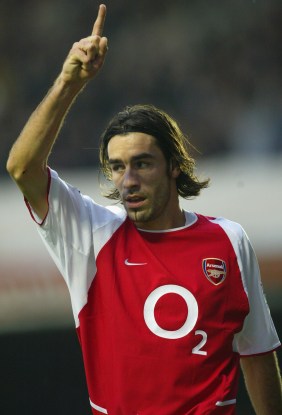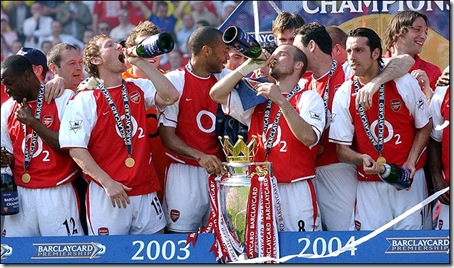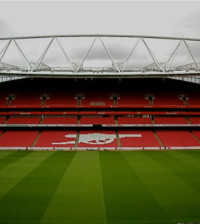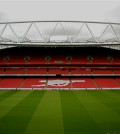- Arsenal in ‘pole position’ to sign Wolves ace Matheus Cunha
- Arsenal eye Dusan Vlahovic as striker plans summer move
- Arsenal and Chelsea set sights on Barcelona Midfielder
- Arsenal make contact to sign Frankfurt star Hugo Larsson
- [Player Ratings] Arsenal 2-1 Fulham: Saka returns but Martinelli shines
- Arsenal hold ‘concrete talks’ to sign Bayern star Leroy Sane
- Arsenal predicted team against Fulham
- Arsenal working on new deal for Bukayo Saka
- Arsenal developing ‘strong interest’ in Viktor Gyokeres
- Arsenal learn asking price for Adam Wharton
The Differences between the Invincibles and the Current Arsenal Side
While many Arsenal supporters are already mourning the loss of Kolo Toure ahead of his expected move to Manchester City in the coming hours, Arsenal Station would like to take this occasion to look at the major differences between the current side and the Invincibles, of which Toure was the last surviving member at the club.
Far more significant than the personnel changes in the club since Arsenal lifted the Premier League trophy with a record of 26-12-0 on 15 May 2004 have been the changes in style. I would like to take a look at what I see as the six major differences in style between these two Arsene Wenger sides.
The most glaring difference between the current side and the Invincibles is in central midfield. In fact, it is the biggest difference between this and ALL of Wenger’s Arsenal sides. Wenger used to rely on a strong central midfield and strong central midfielders to win and hold possession. Even when Arsene brought in a Brazilian in Gilberto, he was the hardest Brazilian midfielder at the time. However, Wenger’s choosing of Fabregas to replace Vieira in the midfield upon the latter’s departure signaled a momentous shift in the footballing philosophy at Arsenal. It meant that Arsenal would move from a strong, powerful central midfield to a smaller, more creative type of midfield.

Another by-product of the change in midfield style has been the loss of the counterattack as a primary weapon. In all my years watching football, I have never seen a team break more quickly, more efficiently, and more creatively than the Arsenal of 2002-05. Yet as Arsenal’s style became more dependent on possession, counterattacking opportunities have become fewer and seemingly less appealing to a team in search of the “perfect goal.”

The most tangible difference between the sides are their homes. The Invincibles played their matches on the narrow Highbury pitch in a stadium that reeked of history and tradition. The current side ply their trade on a significantly 
Finally, and quite possibly the most significant difference between the sides is in the defense. This has less to do with the makeup of the back four than its overall record. No Wenger team has conceded more goals than the current side. In fact, the late defensive run by the club last season saw them narrowly avoid conceding an average of a goal per match, something the club has done only once in Wenger’s reign (2002-03). The center back pairing of Gallas-Toure has never come close to that of Campbell-Toure and that is mostly down to the fact that Gallas is no Campbell but also Kolo is not nearly the player now that he was then. In 2003-04, Toure was only in his second season at the club and just beginning to get regular starts in his new position. He still had the hunger of a young, unproven upstart. Following his return from the 2008 African Cup of Nations, he never really looked the same player.
I am not implicitly saying that any of these changes are necessarily for the worst, though, inevitably, they may be perceived that way, and may actually be, until Arsene and his new style finally bring the first trophies to the Emirates. In honour of the “Invincibles,” enjoy “49: The Complete Unbeaten Record.”
[vodpod id=ExternalVideo.855830&w=450&h=350&fv=]
[digg=http://digg.com/soccer/The_Differences_between_the_Invincibles_and_the_Current_Arse]








7 Comments